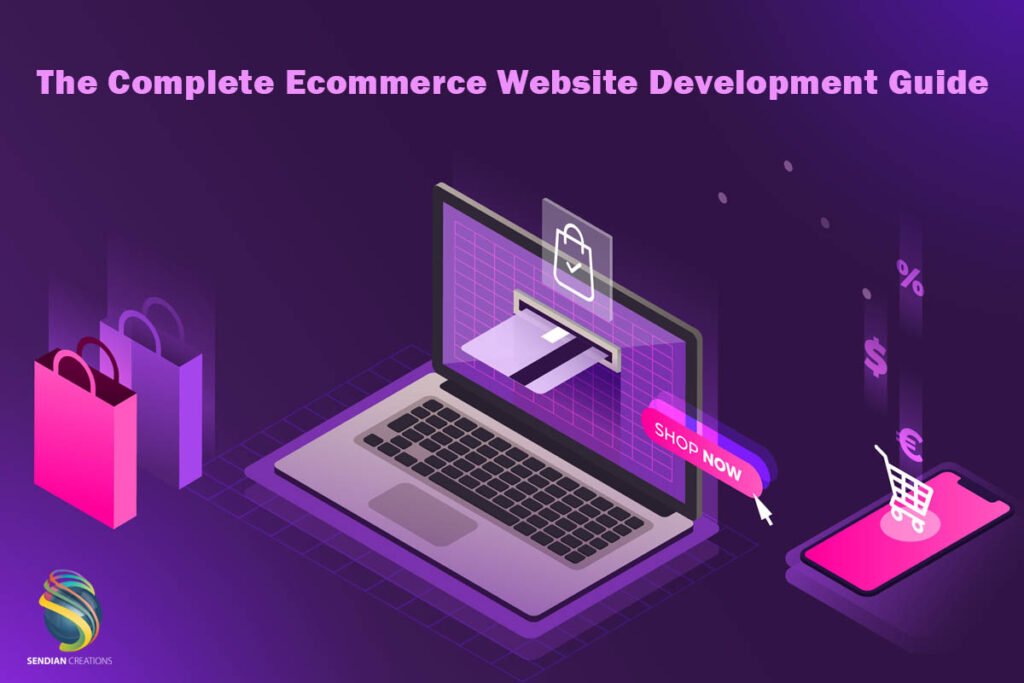The majority of firms are making strong profits from the steadily expanding e-commerce sector. Online shopping is growing in acceptance. It has immense potential and provides entrepreneurs with big money. Even so, it might be challenging for business owners to estimate the cost of ecommerce website development. For this reason, we studied our experience and decided to provide this comprehensive guide for you.
As a business, you could be unsure about the sort of website to create, how many pages it needs, and a number of other development issues. If you don’t want to engage a professional, you’ll need to work with an eCommerce development company to handle this. This article will help you understand exactly what to think about and how much it will cost. It will therefore help with software product pricing. Therefore, the moment has come to learn the key components. Move along!
How much does the primary factor in the building of an eCommerce website cost? Its premise is that not all eCommerce websites have the same level of development. If you want a website with limited features, the cost will be lower than for a website of the highest calibre.
The price of an e-commerce website entirely depends on what you want and how you want to build it. The building of a bespoke eCommerce website is still dependent on a few fundamental principles that apply to all businesses.
1 E-Commerce Web Design
The overall design of the website is the first big component of the cost of an eCommerce website, but do not overlook the fact that it is crucial to your success.
If your eCommerce website is outdated or outdated, potential customers will believe your business operates similarly and will shop elsewhere. Web design styles are typically broken down into four categories: simple, moderately styled or lightly styled, high-end, and world-class. Simple web pages function as intended and look nice; High-resolution images and colour schemes that are simple and appealing to the website’s target audience.
- E-Commerce Website Responsive Design
Any eCommerce site now must have a responsive design. Customers browse any eCommerce website on their smartphones and tablets without thinking about the products you sell.
A responsive website and the necessity for custom eCommerce website development are both advantages. Your eCommerce website will automatically resize and adapt to the user’s device thanks to this feature. Regardless of the device used by the consumer, a responsive design will now be shown.
- Usableness
A shopping cart, a payment module, secure gateways, and other significant components that are all necessary for the fundamental eCommerce functionality will all be included when you construct an eCommerce website. These features are called bespoke eCommerce features.
The bulk of the features you’ll need to build a straightforward eCommerce site are already accessible. Choosing plugins is equally crucial since it will help you determine the app’s functionality and quality. Paid ones typically originate from other firms, so they don’t always fit a website.
- Promotion and SEO for online stores
The number of pages a website has will have a big effect on marketing and SEO (Search Engine Optimization). If an eCommerce firm is small and has a limited budget, it can handle the task on its own. Simply put up some effort, and everything will work out. Additionally, there is no need to spend any money.
Large and medium-sized businesses depend heavily on marketing. The cost of marketing and SEO for a small business might range from $250 to $2,000. Marketing expenses for larger eCommerce businesses might be in the region of $3,000 to $5,000 or more. People utilise blogs and email marketing as well as other forms of digital marketing.
- Incorporating a database
The cost of designing an e-commerce website would increase somewhat due to the integration of the database. A website’s database integration is typically optional; however, eCommerce sites must have it. This means your business can manage all of its goods, personnel, and clients from one place. The creation of profiles, setting or choosing preferences, and even having a more individualised website experience are all up to the user.
- The total number of pages on your online store.
You must determine the required number of pages for an eCommerce website. Depending on how many products you decide to sell or how many commodities you choose to offer, each page is created so that it may drive traffic to itself. For each of their items, firms should have a separate page on their eCommerce website.
Your company only requires category pages to begin showing all of your products. Landing pages, payment pages, homes, and other selling categories are examples of them. Our advice, as a top firm that develops e-commerce websites, is to create a small number of pages rather than many.
- Integration with Third Parties
With third-party connections, a wide range of alternatives may be carried out to provide your eCommerce software more functionality. Live chat programmes, third-party shipping choices, and even third-party logistical solutions are all used by e-commerce sites. You can follow applications and products all the way through using this.
You can also hire an ecommerce development company that can provide you with custom development.
The custom development cost of an eCommerce website design pricing may increase as a result of this. When you add more personalization, you immediately contribute more money to cover it.
Take away
From this blog, we intend to present all the important ideas that might increase the success of your ecommerce website development in relation to the cost. Infrastructure expenditures are crucial, as are other crucial website features like database integration, third-party apps, and other things that cannot be overlooked. All the time, energy and money should not go in vain. And this is what your eCommerce website’s success should show.
